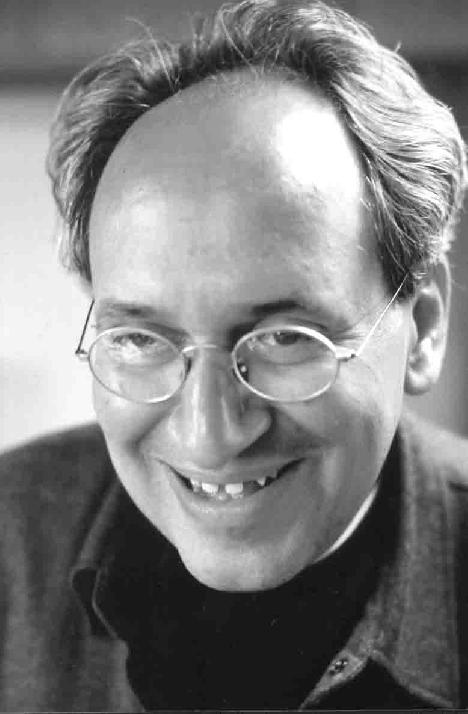At the beginning of a semester, after initial introductions, Wilfredo Chiesa tells the students in his drawing and painting classes at UMB to treat their art as an author would treat his writing – constantly revise their work up to a point where they feel satisfied with it – and then revise it some more. And, just as with writing, Chiesa asserts that there are no boundaries whatsoever that should constrain what anyone’s ideas of beauty and quality in art can be. This would go a long way towards explaining the appeal of Chiesa’s very unconventional works, many of which were showcased during the Puerto Rican-born artist’s “Art Talk” at the Harbor Art Gallery in the McCormack building on Thursday, December 5.
Chiesa, who was born in San Juan in 1952 and did not delve into art until the age of 13 when he simply made a spur-of-the-moment decision to try painting, spent a good portion of the 50-minute-long talk explaining and extrapolating from his envy of musicians, who are able to “create a work of art which is not imitative – which does not represent anything at all, that would assemble the audio experience and project such depth of feeling and such meaningful messages through pure sound, without the constraints of a [tangible] narrative.”
In his often witty and droll manner, Chiesa related personal experiences that laid a foundation for his artistic ideals, wherein he eschews the pre-conceived notions of form and representation, instead espousing the raw, forceful expression of modern abstract art. He then went on to show slides of a series of works of his, which he described as presenting “a dialogue between contrasting forms.”
These pieces are difficult to describe in conventional terms, but they do certainly possess a feeling of contrast, conflict, and idiosyncrasy in both the colors and geometric shapes that Chiesa employs. Many of the works in this series were, in fact, simply different iterations of the same basic ideas, which Wilfredo subtly varied with each painting. This concept of doing painting, after painting, after painting of the same objects was inspired by an exhibition Wilfredo saw in Madrid of the works of famed painter/sculptor Giorgio Morandi – an exhibition that contained a series of still lifes of the same objects, depicted from a multitude of different angles, using different color schemes, brush stroke styles, etc. Mr. Chiesa is currently working on the 87th painting in this series and hopes to be complete with the full set of 100 by the end of next year.
Once he had finished showing his prior works, Chiesa went on to present the audience with his latest project – a mural-sized fresco painting (fresco being a type of plaster that absorbs paint in such a way that makes it as permanent as a tattoo on human skin) to cover the front wall of the 15th-Century Church of San José in his home town of Old San Juan, Puerto Rico. This project will, when completed, turn the front of the church into a spectacle of interplay between color, shadow, and texture. Chiesa took great care to allow the color and geometry of his mural to interact with the existing architecture of the church in a manner that created a sense of visual union between the two, while flattering their individual attributes. It’s difficult to adequately put into words the manner in which Wilfredo’s art would complement the structure of the church, but there was no mistaking the feeling of admiration that the display evoked in the audience.
Chiesa proceeded to explain the process by which the mural would be painted in segments (consisting of interlocking panels of different sizes), which he would paint with the aid of world-class fresco artisans in Sicily, then have shipped across the Atlantic to be assembled at the church itself.
The art talk concluded with a question and answer session that had members of the audience raise queries concerning the shipment of such a delicate medium as plaster across the Atlantic; Chiesa’s connection with the Church of San Jose (and his thoughts on religious experience as a whole); and the effect of having his work in open, public view on Chiesa’s creative process, among other issues, mostly regarding the mural project. Chiesa concluded his presentation by joking about inviting the entire UMB art community to San Juan to view the Church of San Jose when his work on it is done to allow everyone to see what he does with his time when he’s not here.





















































